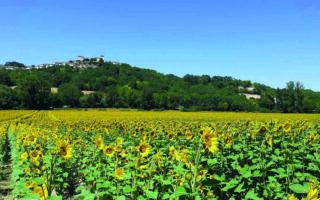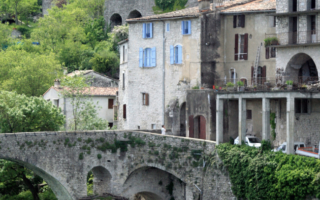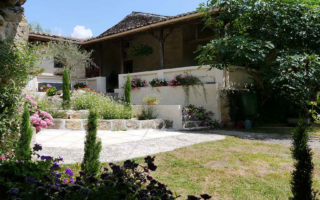Renovation Case Study – Content in Cotentin
Case Study
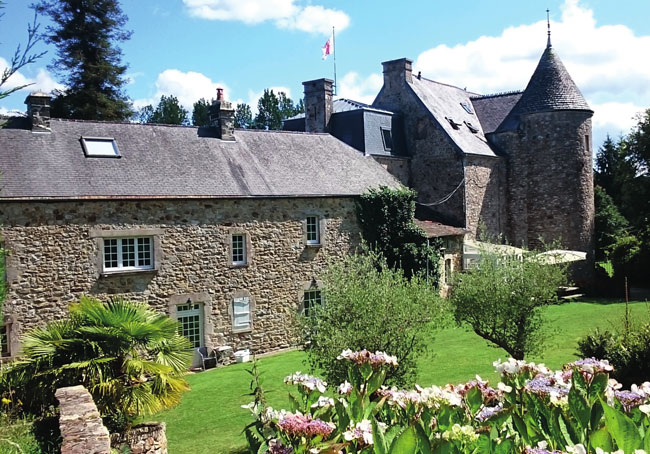
Ignoring her agent’s warnings, Karin Twijnstra fell head over heels with a 16th-century château in Normandy. She tells Sylvia Edwards Davis about her decades-long bid to convert it into a cosy B&B
FRENCHENTRÉE MAGAZINE: What brought you to France?
KARIN TWIJNSTRA: I was 26 and yearning for the good life in France. Me and my then partner were looking for a character house from which to run a bed and breakfast. We wanted land for horses and donkeys in a peaceful spot in the countryside, but not far from a village or town with facilities. We were attracted to the charm of Château le Val, the beauty of this part of Normandy, the wonderful beaches and the lovely markets.
FE: How did you find such an incredible historical property?
KT: We found the château through an estate agent. Initially they tried to dissuade us from viewing it. They told us not to waste our time, that is was owned by nine brothers and sisters who never agreed on anything. Getting them to sell would be nearly impossible. They warned us it would only lead to disappointment. They were not wrong. We arranged a visit anyway, not expecting to be so taken by the sheer beauty of the place. We made an offer right away, and then had to wait six months before the owners finally agreed on the sale.
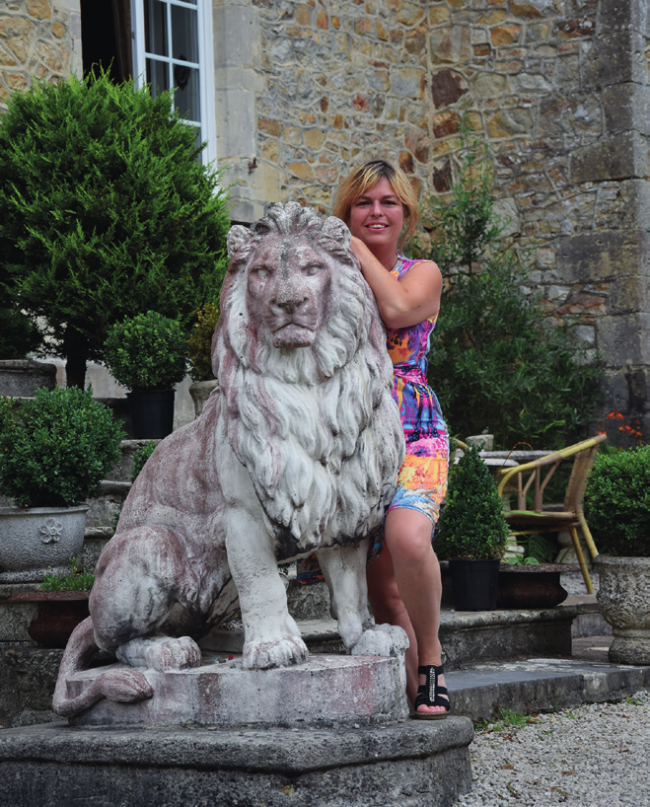
FE: Tell us about Château le Val…
KT: It is so full of history, you feel as if time has stood still here. The foundations of the château go back all the way to the 13th century. In the 16th century, the dovecot was built with express permission of the king. It has 1,045 nest holes! It’s still in very good condition, and now serves as a sort of ‘family pub’ where we get together to play darts and have a chat. The tower, which gives access to the different rooms, also dates from the 16th century. The ‘newest’ part was built in the 1700s, and the remaining two wings in the 17th century. The château was constructed in local stone (still in amazing condition) without lots of ornamentation. Its simplicity adds to its beauty.
It is surrounded by a lovely park with huge trees; some are centuries-old, like the cedars of Lebanon. The site has commanding views over the lush green valley, a pretty forested area with five hectares of woodland and a natural groundwater source with a well that dates back to 1753. It used to provide all the water needed for the château in its heyday.
FE: What attracted you to this location?
KT: The Cotentin peninsula has the charm of an island, but with the convenience of the mainland. It has over 300km of stunning coastline with beautiful golden sand beaches, rugged cliffs, untouched natural bays and charming harbour towns. Within a 30min drive, there’s the start of the D-Day landing beaches, the impressive American cemetery and the German cemetery.
The château is nestled in the centre of the tip of the peninsula in a green valley, accessible via a long driveway. It’s just a 10min walk to the hilltop village of Brix with panoramic views over the surrounding area.
The village has a modern feel despite its old historic centre. Incidentally, Brix was formerly the feudal domain of the Bruces, ancestors of the famous Scottish king, Robert the Bruce.
The village has a bakery, bar, butcher, delicatessen, medical centre, pharmacy and there are large supermarkets less than 10km away. There are two riding schools outside Brix and, during the summer months, there is a market almost every weekend within a short drive, plus many antiques shops and brocantes.
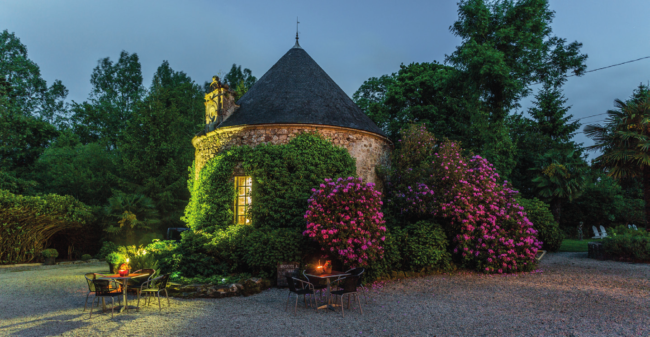
The dovecot is one of the manor house’s most striking features and boasts more than 1,000 nest holes
FE: What condition was the building in when you first moved in?
KT: It was in quite good structural condition when we bought it in 1996, but needed serious updating. We put in entirely new bathrooms, decorated the rooms, added insulation, new double-glazed windows everywhere, two huge central heating systems, new doors and a new up-to-date sceptic tank system.
We also worked on the outside spaces. We did a lot of landscaping and built lovely terraces to create sitting areas in front of the château. It is now a very attractive countryside property, perfect for family gatherings and is also very popular for weddings. We run a bed and breakfast and offer self-catering holidays.
The château is divided into five self catering apartments; each with one or more bedrooms and a living room – some with log fires – a bathroom and kitchen. Then we have a double-bedroom, a bathroom and the living room and garden room on the ground floor, and an outside kitchen to fully enjoy the walled gardens.
There is a truly medieval feel to the dining room, which has an imposing stone fireplace. It can seat 25 people for dinner at a time.
We wanted to create lots of different rental possibilities and combinations to make sure we could accommodate various needs.
FE: Did anything surprise you when you moved into the château?
KT: The silence at night. Also there are so many stars and you can hear owls hooting. It is such an amazing place…
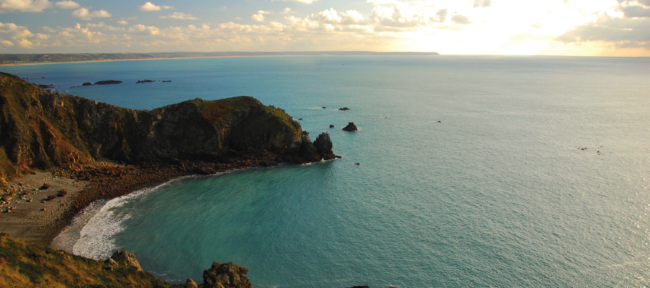
The atmospheric Cotentin peninsula in La Manche
FE: Do you have a favourite room or spot?
KT: The old well. I love it there, with the view of the valley and the huge plane tree. It is so peaceful, filled with birdsong in springtime, with wild flowers everywhere. It really feels like something out of a fairy tale.
FE: How did you tackle the renovation of such a huge property?
KT: Every single cent we earned from letting out the rooms went right back into the château. Sometimes it would be for a new window, another time it could be to buy gravel for the courtyard. Bit by bit the château became what it is now – a truly beautiful place.
We welcome guests from all over the world; mostly English, Dutch and French, but also Australian. And we have even had people from the States and China. It’s funny how different cultures react to the place, in a glass half full or half empty kind of way.
When we showed the château to our guests in the beginning, the English visitors would say, “wow, you’ve done so much work!”, while the Dutch would say, “you’ve still got so much work to do!”.
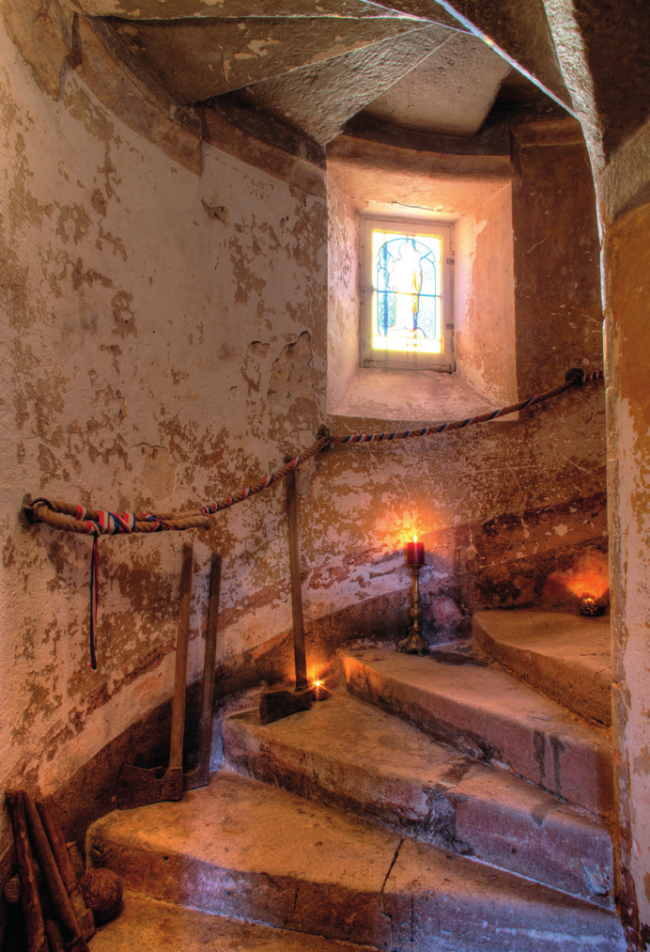
Château le Val’s original stonework is beautifully preserved
FE: How was your French when you arrived?
KT: My French is good, and I already had a working knowledge of the language when I first arrived as I attended an international business school before coming to France. It helped me a lot.
FE: Do you have any tips for prospective buyers? Particularly people toying with the idea of buying a château in need of TLC?
KT: This goes for anyone looking to buy a house in France, but particularly people looking at properties on the same scale as ours: you need to get help from somebody who speaks French really well. Not only someone fluent in the language but who also understands the way French notaires work, and French law, the buying process, the paperwork, etc.
It will save you a lot of time and also help you avoid making costly mistakes, as you may not know what to watch out for, and ask the right questions.
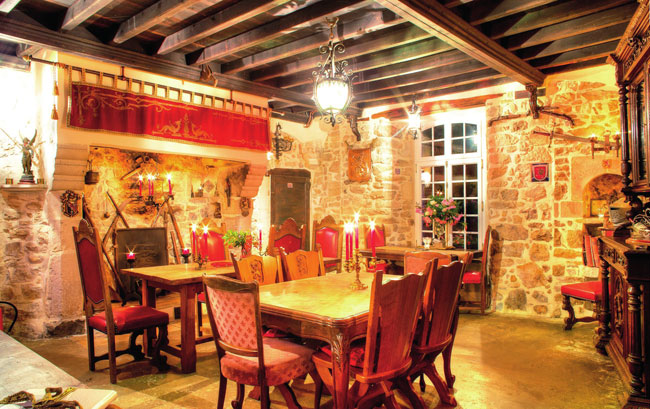
The medieval-style dining room is full of character
FE: What would you say was the biggest challenge of living in France?
KT: I guess for me it was the fact that you suddenly find yourself in a place where you don’t have your friends and family around the corner any more. After the dust settles, you realise that you are in a foreign country and there is nobody here to help you, comfort you when you’re having a rough day, or just to have a laugh with.
In my experience, the French are quite distant in the beginning. So it’s not so easy when you are young and full of expectations about your new life.
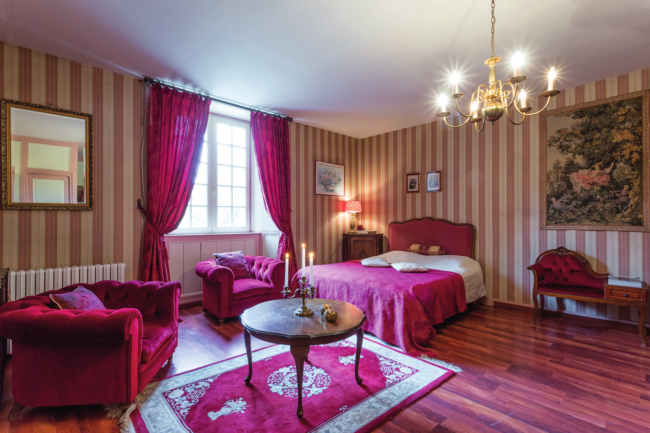
The period features and cosy antique furniture ensure each bedroom is absolutely unique
FE: What do you enjoy most about living in Cotentin?
KT: I really enjoy the exchange of food, goods and services. We live close to a farmer. We sometimes bring him Dutch cheese, and he gives us home-made Calvados – a local apple brandy typical of Normandy.
Another example is the sharing of firewood from our small forest. There is no exchange of money. A farmer comes and does the chopping and stacking, and we each share half the logs. Another aspect of the lifestyle that I love is the relaxed long meals with friends. They are never-ending!
I always enjoy how you bring a big pie to the table and slice it and share it right there, with all your friends gathered round. In Holland, we were used to a different way of doing things, cutting it in the kitchen and saving some bits for another day.
Also the countryside is amazing around here. It is such a pretty area. Another thing I love is going for long walks on the beach with my dog. I can let him off the leash. In Holland, dogs must be kept on a lead…
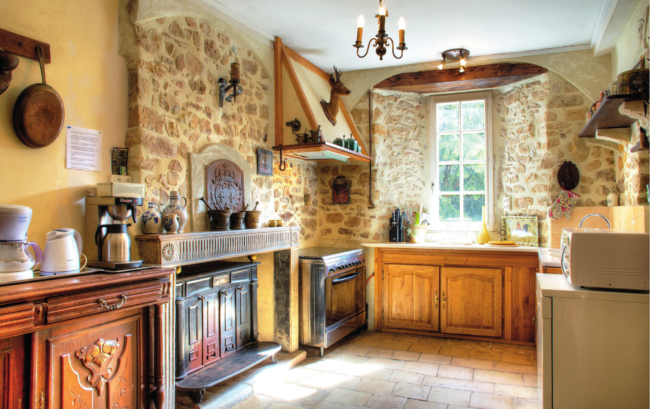
The kitchen has a more rustic feel
FE: So what’s next?
KT: Well, life is coming full circle for me now. My son would like to finish his studies in Holland, and my boyfriend is Dutch and happens to live close to the town where I was born. So I am planning to go back to Holland, back to my roots. I think it’s time to turn the page and put the château up for sale – the closing of one chapter and the opening of another.
FE: Would you do it all over again?
KT: Oh, yes! Having our château in France was a dream, and waking up here, every single day, is a dream come true.
I still love the château, I love my life here. It’s just things are now moving in a different direction. I hope to find new owners who will be as happy in the château as I have been.
It is a good stable business and it deserves to be sold to nice, warm people, who have their own dream and are looking to change their lives.
- Karin Twijnstra moved to France in 1996 from the Netherlands. Website: www.chateauleval.com
Do you feel that Normandy is the region in which you’d love buy your French dream home?
If so, you can browse properties for sale in the area and we also have access to many more – if you’d like the details of those or want help with your search, drop the FrenchEntrée Property Team an email via propertysales@frenchentree.com or call them on +44 (0)1225 463752.
Share to: Facebook Twitter LinkedIn Email
Leave a reply
Your email address will not be published. Required fields are marked *

